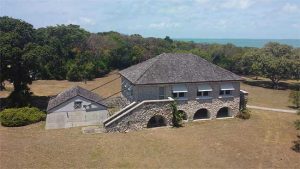 Lignumvitae Key is an island in the Upper Florida Keys. Its located due north of, and less than one mile from the easternmost tip of Lower Matecumbe Key. Located due north of, and less than one mile from the easternmost tip of Lower Matecumbe Key.
Lignumvitae Key is an island in the Upper Florida Keys. Its located due north of, and less than one mile from the easternmost tip of Lower Matecumbe Key. Located due north of, and less than one mile from the easternmost tip of Lower Matecumbe Key.
The island has the Keys’ highest point above sea level of 19 feet (5.8 m), which beats the island of Key West’s Solares Hill by 1 foot (0.30 m). This dark green island covered in rare tropical hardwoods such as the island’s namesake, Holywood Lignum-vitae (Guaiacum sanctum), a species of flowering plant in the creosote bush family.
One of the original names for the key was Isla de la Lena, which means “Isle of firewood.” Other historical names include Cayo de la Leña, Spanish for “Firewood Key” on an unsigned Spanish chart of 1760, called in 1763 Jenkinson Island (after the Lord of the Admiralty, Charles Jenkinson; British) on the DeBrahm chart of 1772, Lignum Vita Key on Romans map of 1774 and Lignum Vitae Kay on both Gauld (1775) and Blunt (1846) charts.
The virgin tropical hardwood hammock that thrives on this island was once common on most of Florida’s Upper Keys; most of these forests have been lost to development on other islands.
In 1919, William J. Matheson, a wealthy Miami chemist, bought this tiny island and built a caretaker’s home with a windmill for electricity and a cistern for rainwater. Today, his hideaway is the visitor centre for this island forest.
The history of Lignumvitae Key dates back in time when the islands of the Florida Keys were a living coral reef. The first record of habitation was in 1831. As early as the mid-1960s, conservation efforts were made by Dr John Poponoe and Sandy Sprunt to protect the island from development.
The preceding is about all regarding written accounts of early occupants; however, there were earlier residents. On the south edge, is evidence of a burial site and kitchen midden of early Native Americans. Stories cite Indians over seven feet in height, buccaneers & pirates inhabiting the island. The island is now a historic district for the National Register of Historic Places.
The significant coral rock walls on the western end of the island are another enigma. They extend for a total length of about 3,000 feet. Legend has it that they were built by the early Spanish; yet, early writings do not mention the walls.
In 1919 the Biscayne Chemical Company, whose president was William John Matheson acquired the island. The Wisconsin-born Matheson had accumulated considerable wealth developing chemical dyes; it was he who was responsible for most of the visible structures seen today. Apparently serious about his new acquisition, he employed a full-time manager for whom he constructed the existing coral rock home.
Visitors to the key can tour the Matheson House, take ranger-led tours through the hardwood hammocks and experience a step back in time. Ranger-guided tours are given December through April. Tours are available twice daily, Friday through Sunday. The park is accessible only by private boat or tour boat. For tour reservations call (305) 664-9814.